
USS Harder (SS-568), a Tang-class submarine, was the second ship of the United States Navy to be named for the harder, a fish of the mullet family found off South Africa.

USS Willis A. Lee (DD-929) was a Mitscher-class destroyer in the United States Navy. She was named for Vice Admiral Willis A. "Ching" Lee USN (1888–1945).

USS Douglas H. Fox (DD-779) was an Allen M. Sumner-class destroyer of the United States Navy.

USS Macdonough (DLG-8/DDG-39) was a Farragut-class guided missile destroyer in the United States Navy. She was named for Commodore Thomas Macdonough, the 4th ship of the United States Navy to be named for him.

USS Robert H. McCard (DD-822) was a Gearing-class destroyer of the United States Navy, named for United States Marine Corps Gunnery Sergeant Robert H. McCard (1918–1944), who was posthumously awarded the Medal of Honor for conspicuous gallantry during the Battle of Saipan.

USS Swerve (MSO-495) was an Agile-class minesweeper acquired by the U.S. Navy for the task of removing mines that had been placed in the water to prevent the safe passage of ships.
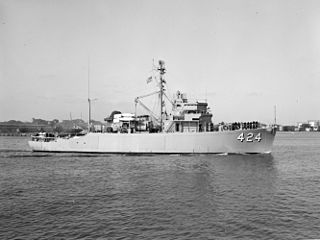
USS Bold (MSO-424) was an Agile-class minesweeper acquired by the U.S. Navy for the task of clearing mines that had been placed in the water to prevent the safe passage of ships.

USS Pinnacle (AM-462/MSO-462) was an Aggressive-class minesweeper acquired by the U.S. Navy for the task of removing mines that had been placed in the water to prevent the safe passage of ships.
USS Terrebonne Parish (LST-1156), originally USS LST-1156, affectionately nicknamed the "T-Bone" by her early crew, was a Terrebonne Parish-class tank landing ship built for the United States Navy in 1952. The lead ship in her class, she was named for Terrebonne Parish, Louisiana, the only U.S. Navy vessel to bear the name. The ship was later transferred to Spain and renamed Velasco (L-11), and was scrapped in 1994.

USS Tweedy (DE-532) was a John C. Butler-class destroyer escort in service with the United States Navy from 1944 to 1946 and from 1952 to 1969. She was sunk as a target in 1970.

USS Limpkin (AMS/MSC-195) was a Bluebird-class minesweeper acquired by the United States Navy for clearing coastal minefields.
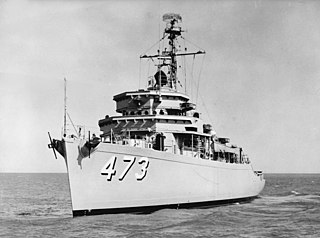
USS Vigor (AM-473/MSO-473) was an Agile-class minesweeper acquired by the U.S. Navy for the dangerous task of removing mines from minefields laid in the water to prevent ships from passing.

USS Avenge (MSO-423) was an Agile-class minesweeper acquired by the U.S. Navy for the task of clearing mines that had been placed in the water to prevent the safe passage of ships.

USS Dominant (MSO-431) was an Agile-class minesweeper built for the United States Navy.

USS Notable (AM-460/MSO-460) was an Aggressive-class minesweeper acquired by the U.S. Navy for the task of removing mines that had been placed in the water to prevent the safe passage of ships.

USS Observer (AM-461/MSO-461) was an Aggressive-class minesweeper acquired by the U.S. Navy for the task of removing mines that had been placed in the water to prevent the safe passage of ships.
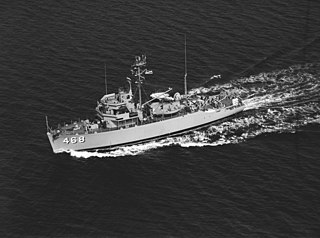
USS Rival (AM-468/MSO-468) was an Agile-class minesweeper acquired by the U.S. Navy for the task of removing mines that had been placed in the water to prevent the safe passage of ships.
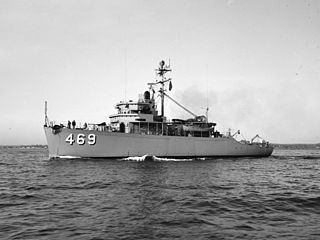
USS Sagacity (AM-469/MSO-469) was an Agile-class minesweeper acquired by the U.S. Navy for the task of removing mines that had been placed in the water to prevent the safe passage of ships.
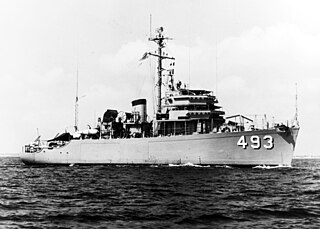
USS Stalwart (MSO-493) was an Agile-class minesweeper acquired by the U.S. Navy for the task of removing mines that had been placed in the water to prevent the safe passage of ships.

USS Assurance (AM-521/MSO-521) was an Ability-class minesweeper acquired by the U.S. Navy for the task of removing mines that had been placed in the water to prevent the safe passage of ships.



















